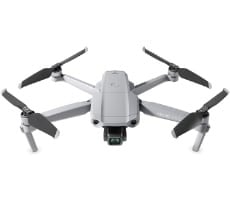Moto 360 Review: Android Wear-Powered Time Piece
Wearing the Moto 360
In testing, I found the 360 to be lightweight, rigid, and comfortable. My review unit included the stock black leather band, which feels no different from any other leather watch band — and that’s a good thing. Part of the challenge that any smartwatch maker faces is making the consumer feel comfortable wearing this somewhat foreign new device type. We’ve seen impressive technology in Google Glass falter simply because consumers were uneasy wearing it, or being around others wearing it. The wearables sector is a delicate one. It’s one thing to persuade consumers to stuff a smartphone in their pocket; it’s another to convince them to strap technology on their skin, where it’s undoubtedly going to say something about their fashion sense in one form or another.All that said, the watch face of the Moto 360 seems large. Even on an average male wrist, the casing takes up nearly 100 percent of the available arm space, and due to the circuitry within, it’s fairly thick as well. Fortunately for Moto, larger watches are en vogue, and the Moto 360 really never felt like a burden on my arm. Mind you, this review is being written by someone who hasn’t worn a watch regularly; I’ll wear one if the situation demands it, but have generally kept my wrists bare. As most writers will tell you, the grinding of a watch band on a laptop palm rest gets old quite quickly, and for those who spend the majority of their day at a keyboard, it’s possible that the wearing of a watch could cause more discomfort than it’s worth.
The Moto 360, despite all of that, was comfortable throughout the day, even while typing. I’ll credit the soft, supple leather band for that. Those who spend a lot of time typing should certainly pick one of the softer bands to prevent unnecessary friction in use. As for design elements? The Gorilla Glass 3 coating meant that I never worried about the display getting chips in it, and while it’s not waterproof per se, it is resistant to drips, drops, dust, and sweat. Basically, it’s waterproof enough to use it in real life without having to treat it like a family heirloom, though I wouldn't dare to swim with it. The outer casing is built from stainless steel, and my opinion is the entire package exudes quality — quality that you may not expect for just $250.
Moto kept the physical buttons to a minimum, placing a single one along the right edge and relying on sensors and a capacitive touch screen to handle everything else. Another impressive touch is the inbuilt Qi charging support. Each Moto 360 ships with a svelte wireless charging base. You just pop the watch on the stand and it begins to charge. While some would argue that carrying around a wireless charging base is a hassle, I think this trumps keeping track of a proprietary connector cable. To boot, the 360 recharged rapidly — much faster than expected. We saw the meter jump from 50% to 98% in around an hour.
In addition to acting as a pedometer, there’s an optical heart rate sensor included as well. While I wouldn’t trust any smartwatch to date to take the place of a dedicated fitness and sleep tracker — mostly due to how frequently you need to remove and charge a watch — the casual fitness junkie will surely appreciate the data that’s collected and filed within Google Fit.
As someone who hasn’t regularly worn a watch, I found myself going about my days enjoying the 360 on my wrist. It’s light enough that it never bothered me, the band is soft enough that it didn’t grind into my wrist while typing, and the face was large enough that it never tried to spin around my wrist while exercising. Put simply, Motorola nailed the design. It acts like, feels like, and wears like a watch. The best technology simply gets out of the way, and that’s what the Moto 360 does from a design standpoint. You realize that it’s on your wrist because of the information that streams to it, but the watch is comfortable enough that I’d consider wearing it even if I left my phone at home. That’s the ultimate sign of great design.
Battery life and longevity
As for battery life? Well, the Moto 360's 320mAh battery is fairly small. When it comes to watches, it’s tough to find space to pack a lot of battery area. Every smartwatch on the market is struggling with the same thing. People want outlandish battery life, but they probably aren’t willing to carry a giant brick around on their wrist. It defies the laws of physics really, at least for now. The Moto 360, when used to alert me of email, weather, sports, stocks, flight announcements, calendar invites, appointments, fitness metrics, and Hangouts messages, did manage to get through a full day, however. Motorola recommends that you place your 360 on its wireless charging base each evening before bed, and I’d second that. I had no issues with the 360 lasting from 8:00am to 8:00pm with the usual bevy of notifications, but heavy users may want a top-off in the middle of the day.In the initial testing phase, where I was setting things up and getting familiar with the user interface, I kept the watch’s screen on for many minutes at a time. In what I’d consider “heavy” use, where the screen is lit up for much longer than just a quick second here or there to show you notifications, you can zap the 360’s battery in just 5 to 8 hours. Granted, Android Wear isn’t engineered to give users the ability to drive primary functionality from the watch’s display, but it’s worth mentioning.









